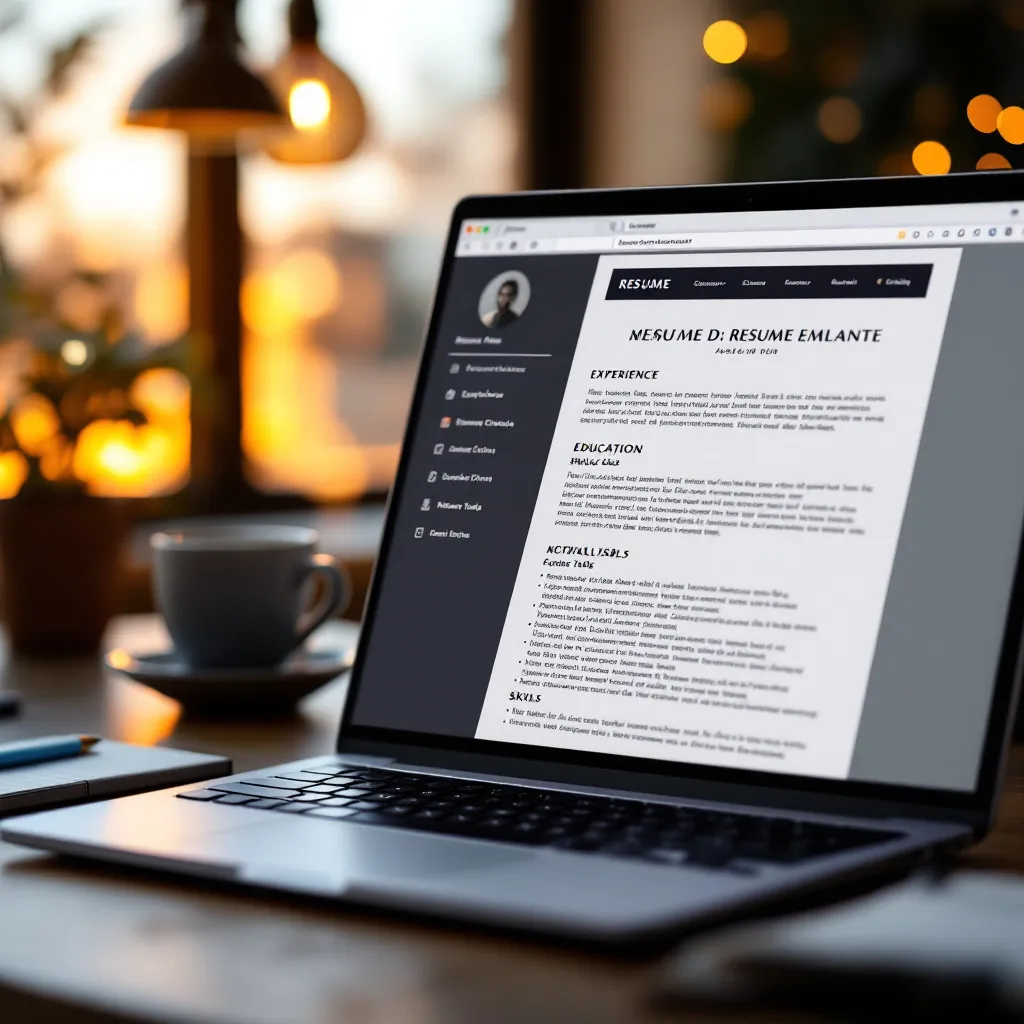Tag: ATS optimization
-
How Accurate is Kickresume’s ATS Simulation? A Detailed Analysis
In today’s competitive job market, getting past applicant tracking systems (ATS) is the first hurdle job seekers must overcome. Tools like Kickresume promise to simulate ATS behavior and help optimize resumes, but how reliable are these simulations? This analysis examines Kickresume’s ATS simulation accuracy and how it compares to real-world systems. Understanding Kickresume’s ATS Simulation
-
Transform Your Existing Resume into an ATS-Friendly Format: A Complete Guide
In today’s competitive job market, having a resume that can successfully navigate Applicant Tracking Systems (ATS) is essential. If you’re experiencing a lack of interview callbacks despite being qualified, your resume format might be the culprit. This guide will walk you through transforming your existing resume into an ATS-friendly document that gets past the digital
-
The Complete Guide to Creating an ATS-Friendly Resume in 2025
In today’s competitive job market, your resume must impress not just human recruiters but also the sophisticated software that stands between your application and a hiring manager’s desk. Applicant Tracking Systems (ATS) have fundamentally changed how companies screen candidates, making ATS optimization an essential skill for every job seeker. This comprehensive guide will walk you
-
How to Create an AI-Friendly Resume That Passes Automated Screening
In today’s competitive job market, your resume needs to impress not just human recruiters, but also the artificial intelligence gatekeepers that decide whether your application reaches human eyes. With over 99% of Fortune 500 companies using Applicant Tracking Systems (ATS) and AI screening tools, optimizing your resume for these digital reviewers is no longer optional—it’s
-
Can AI Help Write Your Resume? A Balanced Guide to AI Resume Tools
In today’s competitive job market, creating a standout resume is crucial. As artificial intelligence becomes more advanced, many job seekers are turning to AI tools to help craft their resumes. But can AI truly help you write an effective resume? This guide explores the capabilities, limitations, and best practices for using AI in your resume
-
The Ultimate Guide to AI Resume Builders: Transforming Your Job Search in 2025
In today’s competitive job market, standing out from the crowd is more challenging than ever. With recruiters spending mere seconds scanning each resume and automated systems filtering applications before human eyes ever see them, job seekers need every advantage they can get. Enter AI resume builders – revolutionary tools that are changing how candidates create,
-
7 Truly Free Resume Builders with No Hidden Costs or Paywalls
The job search process is stressful enough without the frustration of running into unexpected paywalls when trying to download the resume you just spent hours creating. Many online resume builders advertise themselves as “free” only to reveal hidden costs when you’re ready to download your finished document. This comprehensive guide will help you navigate the
-
Free Resume Builders: Create Professional CVs Without Spending a Dime
In today’s competitive job market, having a professionally designed resume is essential, but that doesn’t mean you need to spend money to create one. Whether you’re a first-time job seeker or looking to refresh your existing CV, numerous free tools can help you craft an impressive resume that stands out to employers and passes through
-
The Ultimate Guide to Free Applicant Tracking Systems for Small Businesses
Small businesses and startups often operate with tight budgets, making recruitment tools that come with hefty price tags seem out of reach. Fortunately, free applicant tracking systems (ATS) offer an accessible entry point to streamline hiring processes without the financial commitment. This guide explores how these free tools can transform your recruitment efforts while acknowledging
-
Top 5 ATS Systems for Healthcare Recruiting in 2025: Features, Compliance, and ROI
The healthcare sector faces unprecedented staffing challenges, with projections indicating a shortage of 124,000 physicians by 2034 and 6.5 million healthcare workers departing by 2026—with only 1.9 million replacements available. These statistics underscore the critical need for efficient recruitment solutions specifically designed for healthcare organizations. As traditional recruitment methods falter, with 34% of roles requiring
-
Do Italics and Bold Formatting Hurt Your Resume’s ATS Performance?
In today’s competitive job market, your resume needs to impress both human recruiters and the digital gatekeepers known as Applicant Tracking Systems (ATS). Many job seekers worry that formatting choices like italics and bold text might prevent their resumes from clearing these automated systems. Let’s explore what actually happens when ATS encounters formatting and how
-
Creating a Scannable Resume That Passes ATS Systems
In today’s competitive job market, having a well-crafted resume isn’t enough. Your resume must also be optimized for Applicant Tracking Systems (ATS) – the software that screens candidates before human eyes ever see your application. According to research, over 75% of companies use ATS software to filter applicants, making scannable résumés an essential part of
-
How to Leverage AI Resume Optimizers for Better Job Application Results
In today’s competitive job market, getting past the initial screening phase is often the biggest hurdle for job seekers. With more than 75% of resumes being rejected by Applicant Tracking Systems (ATS) before a human ever sees them, having an ATS-friendly resume has become essential. This is where AI resume optimizers come into play, offering
-
Mastering the Air Parse Score: Optimizing Resumes for ATS Success
In today’s competitive job market, your resume needs to impress not just hiring managers but also the digital gatekeepers known as Applicant Tracking Systems (ATS). Understanding your resume’s “Air Parse Score” could be the difference between landing an interview and being filtered out before human eyes ever see your application. What is a Resume Air
-
5 Proven Strategies to Beat ATS Systems and Get Your Resume Noticed
In today’s competitive job market, your resume needs to impress not just human recruiters, but also the software that screens applications before they reach human eyes. With over 75% of resumes rejected by Applicant Tracking Systems (ATS) before a person ever sees them, understanding how to optimize your application has become essential for job seekers.
-
Resume Keyword Readers: The Secret to Getting Past ATS Systems
In today’s competitive job market, having the right skills isn’t enough—you need to ensure hiring managers actually see your application. With most companies now using digital filtering systems, understanding how to use a resume keyword reader effectively has become essential for job seekers at all career stages. What Is a Resume Keyword Reader? A resume
-
5 Free Modern ATS-Friendly Resume Templates for Word
In today’s competitive job market, getting your resume past the initial screening is more challenging than ever. With over 75% of resumes being rejected by Applicant Tracking Systems (ATS) before they even reach human eyes, having an ATS-friendly resume is no longer optional—it’s essential. This guide will help you understand what makes a resume ATS-compliant
-
5 Quick Ways to Immediately Improve Your Resume
In today’s competitive job market, a strong resume isn’t just helpful—it’s essential. Whether you’re facing rejection letters or preparing for new opportunities, these five quick improvements can transform your resume from forgettable to interview-worthy in a single sitting. 1. Replace Generic Statements with Quantifiable Achievements Generic statements tell hiring managers what you were supposed to
-
How to Save a Resume as PDF: A Complete Guide
In today’s competitive job market, having a properly formatted resume is crucial. While you might create your resume using various word processors or design tools, saving it as a PDF is often the final step before submission. This guide will walk you through the process of converting your resume to PDF format and explain why
-
How to Find Your Resume on Your Phone: A Complete Guide
In today’s fast-paced job market, having quick access to your resume can make the difference between seizing an opportunity and missing out. Whether you’re heading to an unexpected interview or meeting a potential employer, knowing how to locate your resume on your mobile device is an essential skill for the modern job seeker. Understanding Where




















